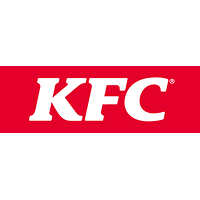It looks like you may be using adblocking software to view this site.
Many features on the site, such as video playback, may not work properly when using adblocking software.
Please whitelist our domain or disable your adblocker to access all features and videos.
'Hunting History'. It's the catch cry driving the Panthers as they look to become the first team in four decades to win three premierships on the trot.
Should Ivan Cleary's men achieve their ultimate goal and take the lap of honour at Accor Stadium on October 1, it will come 40 years and six days after Jack Gibson's Eels completed a three-peat with an 18-6 win over Manly.
In this extract from 'Rugby League Icons: The Clubs, The Tribes, The Triumphs', Cronin reflects on Parramatta's drought-breaking triumph 1981 premiership and the cavalcade of stars he shared the stage with as the Blue and Golds built the sort of dynasty every club craves but only a special few have achieved.
Match: Panthers v Storm
Finals Week 3 -
home Team
Panthers
1st Position
away Team
Storm
3rd Position
Venue: Accor Stadium, Sydney
The Dynasties
Equal parts blood, sweat and tears, premierships are the game’s ultimate reward for 12 months of commitment – a career-defining moment to be savoured by players and fans alike.
Winning one is hard enough, going back-to-back takes something very special, and a three-peat puts a team in rarefied air, only Eastern Suburbs, South Sydney, Balmain, St George and Parramatta having achieved the feat since 1908.
With the incomparable Dally Messenger as their captain-coach, the Roosters took three consecutive titles in 1911-12-13 before Balmain followed suit in 1915-16-17 and the mighty Rabbitohs stood head and shoulders above the competition with five on the bounce between 1925 and ’29.
The Roosters were at it again in the mid-30s, with master mentor Arthur Halloway adding three more premierships to the four he had won as captain-coach of Balmain between 1916 and 1920.
Under the guidance of legendary hardman Jack Rayner, the Bunnies collected an astonishing five titles in six years in the 50s, including three in a row from 1953-55, before St George ascended to the throne in 1956 and set about rewriting the history books.
The Red V weren’t just at the top of the tree in the NSWRL – they built a tree house up there and locked out everyone else for a decade.
Boasting future Immortals in Reg Gasnier, John Raper, Graeme Langlands and Norm Provan, tryscoring machine in Johnny King, fearless leader Ken Kearney and defensive powerhouses Brian Clay and Kevin Ryan, the Dragons turned the Sydney Cricket Ground into their own personal playground from ’56 to ’66.
Across their 11 grand final victories, they conceded just five tries and outscored their opponents 205 points to 63, building a dynasty the likes of which will never be seen again.
The Red V reign finally came to an end in 1967, when Redfern royalty John Sattler, Ron Coote and Bob McCarthy sparked a golden run that would deliver four premierships in five years, but only one team has managed to string together three titles on the trot since the Saints were marching in - Jack Gibson’s electric Eels of the early 80s.

After entering the competition in 1947, Parramatta collected nine wooden spoons in their first 15 seasons, including six in a row from 1956-61, so when the drought broke in 1981 it sparked unrivalled scenes of celebration.
As the players partied with loyal fans at the leagues club, a more boisterous crowd had gathered for a bonfire at the club’s home ground Cumberland Oval, with the old grandstand used as kindling.
Built in the 1930s, the creaky wooden structure had seen better days, and the club had long rallied for it to be demolished and a new stadium erected in its place, but with joy in their hearts and beers in their bellies, rampant Eels fans took matters into their own hands.
Everything from the fence palings to the goal posts were burnt as the party raged out of control, all with champion centre Mick Cronin and his team-mates watching on from the safety of Parra Leagues.
It looks like you may be using adblocking software to view this site.
Many features on the site, such as video playback, may not work properly when using adblocking software.
Please whitelist our domain or disable your adblocker to access all features and videos.
Reg Gasnier - Hall of Fame
“A new stadium had been approved and they guaranteed they weren’t going to be sitting in that one again - I think they set it alight again on the Monday or Tuesday night,” says Cronin, the unassuming Gerringong product who remains the Eels’ all-time leading pointscorer some 36 years after his retirement,
“It was an amazing night. I played all my career for winning competitions. You can take anything off me in rugby league, I’d cop it, but I wouldn’t like to lose those competitions.”
Cronin piloted 10 goals across the three deciders against Newtown (’81) and Manly (’82-’83) and offered a calming influence in a backline stacked with freakish talents including Steve Ella, Peter Sterling, Brett Kenny and Eric Grothe.
Up front the Eels boasted the perfect mix of ball-players and big hitters, with captain and hooker Steve Edge leading the likes of Ray Price, Ron Hilditch, Geoff Bugden, Bob O’Reilly, Peter Wynn, Steve Sharp, Stan Jurd, Kevin Stevens and Paul Mares onto the sacred turf of the SCG.
Having made it all the way to the big dance in 1976 and ’77 under the guidance of Terry Fearnley only to come up short in a couple of heartbreakers, the pieces were in place when the game’s ultimate chess master Gibson arrived at Cumberland Oval.
“When Jack came in ’81 he knew we’d be in good shape because of Fearnley’s influence. Terry should get a lot of the credit for what we achieved,” says Cronin.
It looks like you may be using adblocking software to view this site.
Many features on the site, such as video playback, may not work properly when using adblocking software.
Please whitelist our domain or disable your adblocker to access all features and videos.
76. Michael Cronin - Hall of Fame
“Terry is the reason I went to Sydney to play football. He was a salesman and it took him 18 months to sell me on leaving Gerringong, he was very persistent. I’ve got a lot to thank him for.
“He could easily have won those two premierships (in ’76 and ’77) with a bit of luck but he had laid the platform and in 1981 it clicked when blokes like Sterling, Kenny and Grothe were able to play week in and week out.
“Steve Ella had gotten injured in his fourth first-grade game in 1979 and didn’t play for 18 months, but Jack had coached him in junior reps and he knew what he could do.
“These guys were fortunate to come through under Jack. He didn’t cop any crap. You’d get a second chance but you didn’t want to be lining up for your third or fourth.
It looks like you may be using adblocking software to view this site.
Many features on the site, such as video playback, may not work properly when using adblocking software.
Please whitelist our domain or disable your adblocker to access all features and videos.
Match Highlights: Panthers v Eels
“I remember Jack saying to Brett once ‘you’re not playing this week’. Brett said he wanted to play so Jack said, ‘if you want to play you can turn up at 1.30 [for reserve grade] or I’ll see you at 3 o’clock next week so Brett said, ‘I’ll see you at 3 next week’.
“He was never going to play reserve grade but Jack had decided he needed rest and that was that.”
Such was the players’ reverence for Gibson that there would be no histrionics from Kenny, only history making feats on the game’s grandest stage with two tries in each of the three grand finals.
A man born for the big stage, ‘Bert’ bamboozled the Jets and Sea Eagles with his sweet stepping and incredible instincts before doing the same for the NSW Blues on the same patch of grass when they broke their State of Origin drought in 1985.
The following year the Eels would make it four titles for the decade when they were dragged into a defensive dogfight with Canterbury and emerged victorious 4-2.
In what would be his swan song at 35, Cronin’s two penalty goals trumped Terry Lamb’s one, the two dominant forces of the 80s playing out the only tryless grand final in history.
Also taking his final bow that day was Price, the physical toll of 258 games played at warp speed finally catching up with the proud Parra warrior.

Cronin admits he had limped to the finish line after losing the sight in his eye and playing just seven games for the year, but he is adamant Price had more to give.
“I don’t know why Pricey retired. I never discussed retirement with him. He was still playing as good as he ever had,” Cronin said.
“Pricey never gets enough credit for the influence he had on Parra over all those years. He made seven grand finals in the 11 years he was there which is remarkable.
“He got plenty of recognition but not enough credit – that was Jack’s line and he was spot on.”

Meet Michael Cronin, Eric Grothe snr and Stan Jurd at a special book signing at Peter Wynn's Score in Parramatta on Saturday, September 23 from 12pm to 2pm




